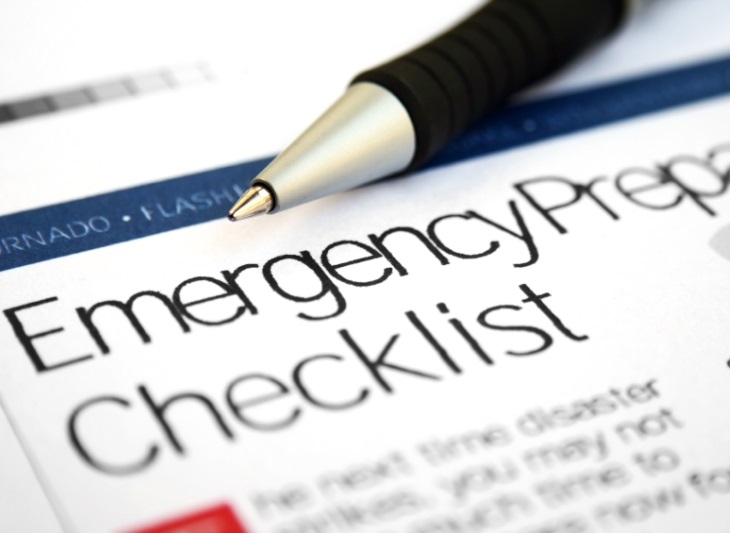How preparing for disasters is critical for APEC economies

Building resilience to disasters is not only critical for APEC economies, but is essential to the lives and livelihoods of the billions living across the vast region.
By Dr. Li, Wei-Sen, Co-Chair of the APEC Emergency Preparedness Working Group
This 26 December marks the eighth anniversary of the devastating 2004 Indian Ocean earthquake and resulting tsunamis that deeply affected much of Thailand, Indonesia and other parts of the world. Close to a quarter of a million lives were lost and the damages totaled nearly US$10 billion.
The plight of those affected prompted a global humanitarian response. The worldwide community donated more than US$14 billion in disaster relief funds. In 2005, also in response to the tragedy, APEC formed a group specifically to deal with such large-scale disasters, by coordinating and facilitating emergency preparedness and disaster risk reduction efforts.
The APEC Emergency Preparedness Working Group was established and today it brings together government officials from the region’s various emergency services departments to build its members’ capacity to better mitigate, prepare for, respond to, and recover from emergencies and large-scale disasters.
Being fully aware of APEC’s core trade and investment mission, and its resource limitations, the group’s efforts are designed to complement, but not duplicate, the work of other international organizations that deal with disaster relief.
The key word here is “preparedness” and the group is readying its members to deal with future emergencies. This is done primarily by focusing on building the resilience of businesses and communities and fostering closer ties with the private sector to protect business, trade and economic activities from disruption.
Typhoon Bopha in southern Philippines and Hurricane Sandy in the east coast of the United States are two of the latest catastrophes to hit the APEC region.
In Southeast Asia, last year’s tropical storm Nock-ten triggered massive flooding along the Mekong and Chao Phraya river basins, which inundated 65 of Thailand’s 77 provinces and also affected parts of Viet Nam. The floods forced factories and schools to be shut down and cost Thailand an estimated US$45.7 billion in damages.
Other catastrophes in the region – such as the 2008 earthquake in China's Sichuan province, the 2010 earthquake in Chile, and the 2011 earthquakes in New Zealand and Japan – have also cost APEC economies greatly, both on the economic and human scale.
APEC members are, unfortunately, well-acquainted with such devastating events. In fact, the Asia-Pacific region experiences over 70 percent of the world’s natural disasters. Around 40 percent of the world’s population, or nearly 2.7 billion people, also live in the APEC region.
Building resilience to disasters is therefore not only critical for APEC economies, but is essential to the lives and livelihoods of the billions living across the vast region.
During the 6th APEC Senior Disaster Management Officials Forum held in Vladivostok, Russia last October, regional experts learned how to boost resilience by integrating state-of-the-art technologies with disaster management systems, such as monitoring and forecasting. They also shared lessons learned from recent large-scale disasters, including last year’s earthquakes in Christchurch, New Zealand and Sendai, Japan.
Indeed these major catastrophes are critical reminders of the importance of APEC’s emergency preparedness work. Regional cooperation therefore needs to be strengthened so that all APEC economies are better able to acquire the needed knowledge to implement life-saving actions.
Learning from past disasters is a very important component for emergency preparedness.
In August 2011, a workshop for government officials and businesspeople that strengthened private sector preparedness during emergencies was conducted in Sendai, Japan. Participants from both the public and private sectors shared case studies and specific methods, practices and tools for business continuity planning in times of crises. In 2012, through cross-cutting collaboration with the APEC Small and Medium Enterprises Working Group and an Australia-led workshop, the outcomes are aiming at building guidelines for business continuity planning to boost public private partnership.
Similarly, recognizing that hundreds of millions of children across the APEC region are going to schools in high seismic risk areas, another workshop was conducted in October 2011 in Chinese Taipei to improve school earthquake and tsunami safety by making use of international guidelines.
Going forward, more groundbreaking projects will be held in the coming months. One will work to enhance networking among crisis management centres through information sharing first, while another joint project, with the APEC Transportation Working Group, will seek to reduce the adverse impacts of disasters on the global supply chain and boost its resilience.
The APEC Emergency Preparedness Working Group is expanding on APEC’s original trade and investment liberalization agenda to reflect current priorities, meet the immediate needs of communities, businesses and economies, and achieve secure growth for all.
Essentially the safety and security of our people underpins all economic activities. These are the necessary conditions for the further development of our economies. Business and trade remain critically vulnerable, unless APEC economies can, through the group’s collective efforts, continually build up their resilience to emergencies and better prepare themselves against disasters.

